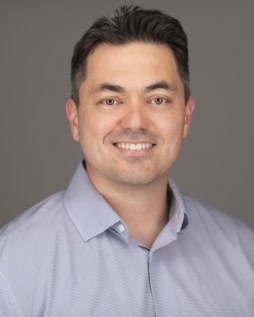9 D Universe
Author(s): Rachel BerkowitzEvidence builds against the long-held notion that water ice can be truly glassy.[Physics 18, s86] Published Mon Jul 07, 2025 [...]
Mon, Jul 07, 2025Source APS
Author(s): Qihang LiuA new symmetry-breaking scenario provides a comprehensive description of magnetic behavior associated with the anomalous Hall effect.[Physics 18, 127] Published Mon Jul 07, 2025 [...]
Mon, Jul 07, 2025Source APS
Author(s): Sachin RawatA structural phenomenon traditionally confined to inanimate systems has now been observed in biology.[Physics 18, 128] Published Mon Jul 07, 2025 [...]
Mon, Jul 07, 2025Source APS
A physicist from Vilnius University in Lithuania has created a 3D-printed replica of the Sorbonne Chapel so small it fits on a human hair.
Located in Paris’s Latin Quarter, the Chapel of Sainte-Ursule de la Sorbonne is a Roman Catholic chapel and was constructed in the seventeenth century.
To create the structure, [...]
Fri, Jul 04, 2025Source Physics World
Damage to the spinal cord can disrupt communication between the brain and body, with potentially devastating effects. Spinal cord injuries can cause permanent loss of sensory, motor and autonomic functions, or even paralysis, and there’s currently no cure. To address this inadequacy, researchers at Chalmers University of Technology in Sweden [...]
Fri, Jul 04, 2025Source Physics World
Scientists in Switzerland and Japan have uncovered what they say is the first direct evidence that materials at the bottom of the Earth’s mantle flow like a massive river. This literally “ground-breaking” finding, made by comparing seismic data with laboratory studies of materials at high pressures and temperatures, could reshape [...]
Fri, Jul 04, 2025Source Physics World
Researchers have used machine learning to dramatically speed up the processing time when simulating galaxy evolution coupled with supernova explosion. This approach could help us understand the origins of our own galaxy, particularly the elements essential for life in the Milky Way. [...]
Thu, Jul 03, 2025Source Phys.org
According to a recent white paper from the UK’s National Association of Disabled Staff Networks, 22% of working-age people in the UK have a disability compared to less than 7% of people working in science. At the upper echelons of science, only 4% of senior academic positions are filled with [...]
Thu, Jul 03, 2025Source Physics World
Quantum computers promise to revolutionize technology, but first they must overcome decoherence: the loss of quantum information caused by environmental noise. Topological quantum computers aim to do this by storing information in protected states called Majorana modes, but identifying materials that can support these modes has proved tricky and sometimes [...]
Thu, Jul 03, 2025Source Physics World
When Werner Heisenberg travelled Helgoland in June 1925, he surely couldn’t have imagined that more than 300 researchers would make the same journey exactly a century later. But his development of the principles of quantum mechanics on the tiny North Sea island proved so significant that the crème de la crème of [...]
Thu, Jul 03, 2025Source Physics World
Figuring out the ages of stars is fundamental to understanding many areas of astronomy—yet, it remains a challenge since stellar ages can't be ascertained through observation alone. So, astronomers at the University of Toronto have turned to artificial intelligence for help. [...]
Wed, Jul 02, 2025Source Phys.org
When black holes need a place to crash, they prefer a nice, bright quasar. [...]
Wed, Jul 02, 2025Source Phys.org
As the number of cancer cases continues to grow, radiation oncology departments are under increasing pressure to treat more and more patients. And as clinical facilities expand to manage this ongoing growth, and technology developments increase the complexity of radiotherapy delivery, there’s an urgent need to optimize the treatment workflow [...]
Wed, Jul 02, 2025Source Physics World
A research team led by Dr. Shen Jinhua from the Xinjiang Astronomical Observatory (XAO) of the Chinese Academy of Sciences has investigated rapid spatiotemporal vertical electric currents (VECs) during an X-class flare. [...]
Wed, Jul 02, 2025Source Phys.org
Author(s): Michael SchirberInfrared spectroscopy performed on high-pressure ice phases demonstrates a possible technique for studying ice on other planets or moons.[Physics 18, s83] Published Wed Jul 02, 2025 [...]
Wed, Jul 02, 2025Source APS
An unexpectedly strong solar storm rocked our planet on April 23, 2023, sparking auroras as far south as southern Texas in the U.S. and taking the world by surprise. [...]
Tue, Jul 01, 2025Source Phys.org
A new result from the molecular gas survey in the Southern Pinwheel Galaxy M83 using the Atacama Large Millimeter/submillimeter Array (ALMA) Telescope reveals a discovery of 10 high-velocity clouds composed of molecular gas, moving at velocities significantly different from M83's overall rotation, an indication that the influx of these gases—which [...]
Tue, Jul 01, 2025Source Phys.org
Author(s): Rachel BerkowitzSeven metric tons of liquid xenon get closer than ever to revealing WIMPs. [Physics 18, s82] Published Tue Jul 01, 2025 [...]
Tue, Jul 01, 2025Source APS







